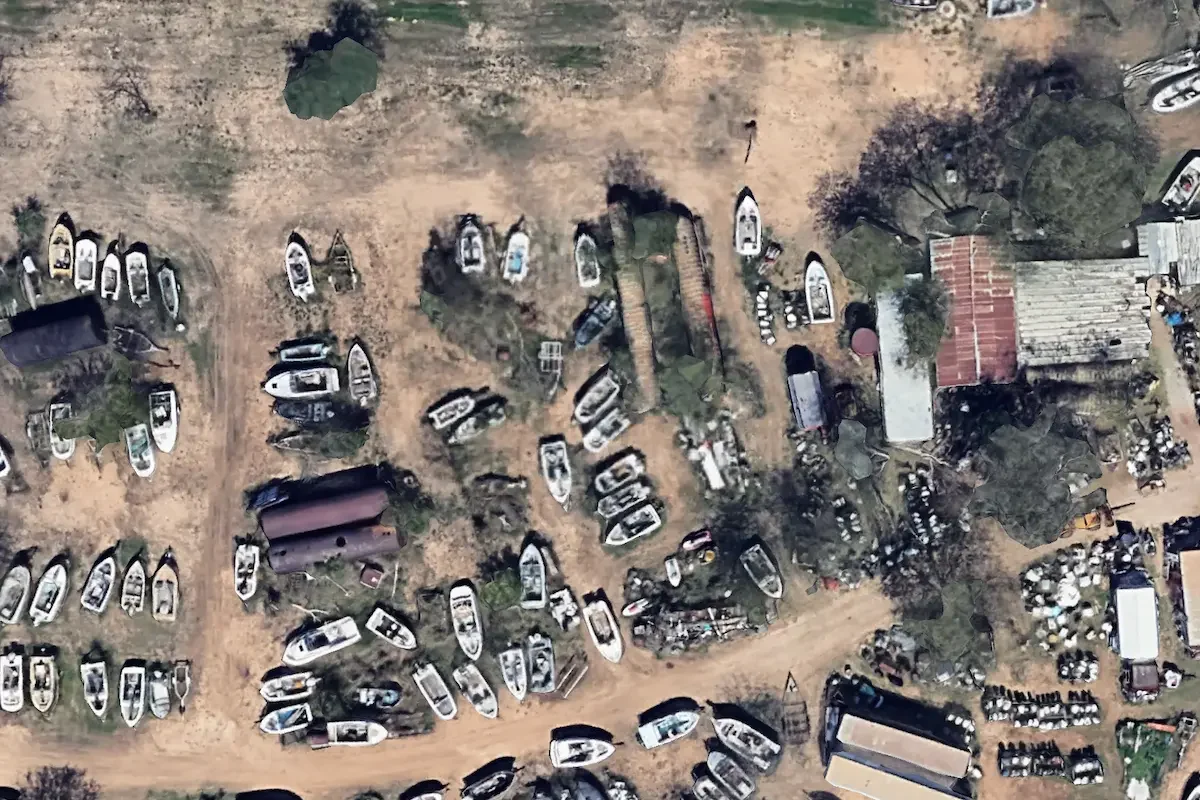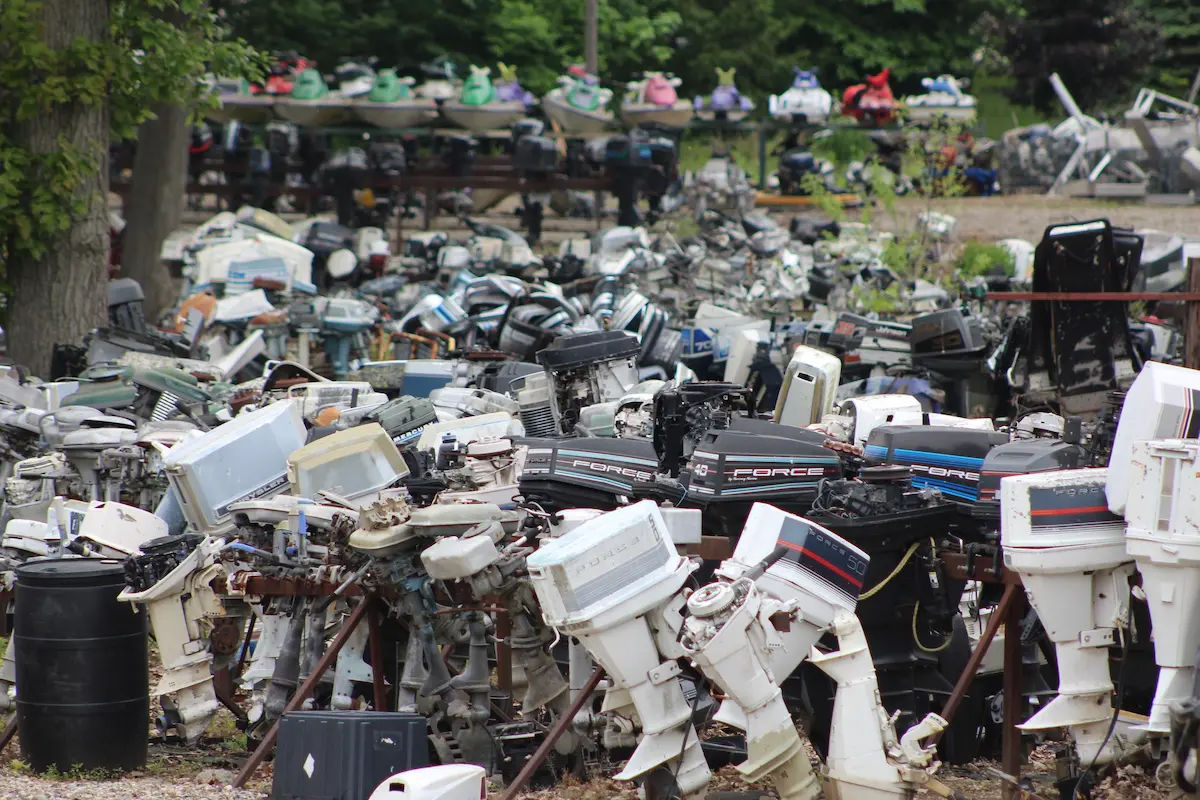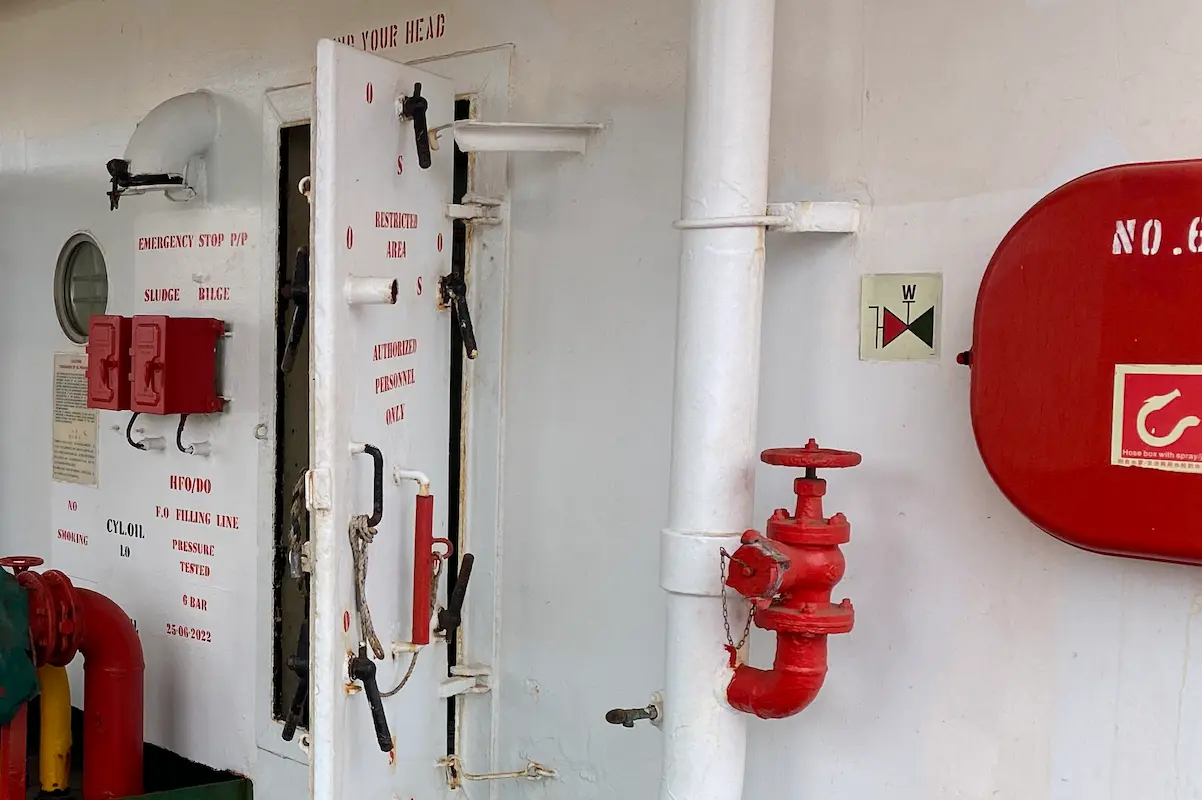The maritime industry is undergoing a significant transformation. As environmental concerns rise, there’s a palpable shift towards cleaner fuels.
Among these, Liquefied Natural Gas (LNG) emerges as a promising contender, offering a blend of environmental and operational benefits.
Quick Summary
- LNG is gaining traction as a cleaner marine fuel.
- “LNG-Ready” vessels are designed for potential LNG use but face challenges.
- Economic, technical, and regulatory factors influence the adoption of LNG.
- The number of LNG-fueled ships is growing, but they still represent a small fraction of the global fleet.
What Does “LNG-Ready” Mean?
When we say a vessel is “LNG-Ready”, we’re referring to ships designed to accommodate LNG fuel systems in the future. These vessels might not use LNG from the outset but have the necessary design provisions to make a switch feasible.
The primary distinction between LNG-fueled and LNG-ready vessels centers on their fueling systems and engine configurations.
LNG-fueled vessels are equipped with systems that actively utilize LNG as a primary fuel source. These ships often employ dual-fuel engines, which can run on both LNG and traditional marine fuels, providing flexibility in fuel choice based on availability and cost.
On the other hand, LNG-ready vessels are designed with the necessary provisions to accommodate LNG fuel systems in the future.
While they might not be currently using LNG, their design ensures that they can be retrofitted to incorporate LNG fueling systems and, if needed, transition to dual-fuel engines to leverage the benefits of LNG.

The Rationale Behind LNG-Ready Vessels
LNG offers several advantages:
- Environmental Benefits: LNG burns cleaner than traditional marine fuels, leading to significant reductions in emissions.
- Economic Considerations: As regulations tighten, LNG presents a way for shipowners to future-proof their investments.
- Operational Flexibility: Given the evolving marine fuel landscape, being LNG-ready offers shipowners the flexibility to adapt based on future fuel availability and economics.
Cost Considerations for LNG-Ready Vessels
The decision to adopt LNG as a marine fuel is heavily influenced by its economic viability. While environmental benefits are a significant driver, the bottom line remains a primary concern for many shipowners and operators. Here’s a more detailed look at the cost considerations:
Price Dynamics: Traditional Fuels vs. LNG
- Traditional Marine Fuels: Historically, IFO380 and MGO have been the dominant marine fuels. Their prices have been influenced by global oil markets, geopolitical events, and refining capacities.
- LNG Pricing: Unlike traditional marine fuels, LNG prices are often linked to natural gas benchmarks. This can lead to different price trajectories compared to oil-based fuels. Additionally, the emergence of spot markets for LNG has introduced more variability in pricing.
Energy-Equivalent Pricing: Understanding LNG-380e and LNG-MGOe
- LNG-380e: This is the price for an amount of LNG that delivers the energy equivalent of one metric tonne of IFO380 bunker fuel. It provides a direct comparison between the cost of LNG and traditional heavy bunker fuel, allowing shipowners to make informed economic decisions.
- LNG-MGOe: Similarly, LNG-MGOe offers a price comparison between LNG and Marine Gas Oil (MGO). Given that MGO is generally more expensive than IFO380 but offers cleaner burning properties, this comparison is crucial for operators considering a shift towards cleaner fuels without fully transitioning to LNG.
Conversion and Retrofitting Costs
Transitioning to LNG, even for LNG-ready vessels, involves costs:
- Infrastructure: Installing cryogenic tanks and associated systems can be expensive. The vessel might also need modifications to accommodate the added weight and changed weight distribution.
- Engine Modifications: While some LNG-ready vessels might have dual-fuel engines, others might require significant modifications or even replacements to use LNG.
Training and Operational Costs
LNG, due to its unique properties, requires specialized handling:
- Crew Training: Crew members need training to handle LNG safely, understand its properties, and operate new fuel systems. This training represents an ongoing cost, especially as crew members rotate.
- Operational Adjustments: LNG’s cryogenic nature means that it evaporates if not used. This “boil-off” gas can be used as fuel, but managing it requires operational adjustments that might have associated costs.
Potential Savings and ROI
Despite the upfront costs, LNG can offer savings:
- Fuel Cost Savings: Depending on the price dynamics, especially the LNG-380e and LNG-MGOe benchmarks, LNG can offer cost savings over the operational life of the vessel.
- Regulatory Compliance: As emission regulations tighten, non-compliance can lead to fines and operational restrictions. Using LNG can mitigate these risks, leading to indirect savings.
- Operational Efficiency: Modern LNG-fueled engines can offer better fuel efficiency compared to older oil-fueled engines, leading to savings in the long run.
Challenges Faced by LNG-Ready Vessels
Despite their potential, LNG-ready vessels face several challenges:
- Infrastructure: The global LNG bunkering infrastructure is still in its nascent stages.
- Training: Crews need specialized training to handle LNG.
- Market Dynamics: The maritime fuel market is evolving, with new alternatives emerging, adding to the uncertainty.
The Technical Aspects of LNG-Ready Design
LNG-ready vessels have specific design considerations:
- Storage: They’re equipped with space provisions for cryogenic tanks.
- Propulsion: Engine designs can accommodate LNG or are dual-fuel capable.
- Safety: Enhanced ventilation, leak detection, and containment systems are crucial given LNG’s unique properties.
Insights on Key LNG Bunkering Regions
- Northwest Europe:
- Rotterdam, Netherlands: As one of the world’s busiest ports, Rotterdam has been proactive in promoting LNG as a marine fuel. The port has several LNG bunkering vessels and has partnerships with major energy companies to ensure a steady supply.
- Antwerp, Belgium: The Port of Antwerp has been a significant advocate for cleaner shipping fuels. It offers incentives for LNG-fueled vessels and has invested in bunkering infrastructure.
- Zeebrugge, Belgium: This port is home to one of Europe’s most significant LNG terminals, making it a natural hub for LNG bunkering.
- Asia:
- Singapore: As the world’s top bunkering hub, Singapore has made strategic moves to incorporate LNG into its offerings. The Maritime and Port Authority of Singapore (MPA) has provided grants and incentives for LNG bunkering vessels and infrastructure.
- Yokohama, Japan: Japan, being a significant importer of LNG, has leveraged its existing infrastructure to develop LNG bunkering services, with Yokohama being a focal point.
- North America:
- Jacksonville, USA: This port in Florida has been a pioneer in the U.S. for LNG bunkering, primarily serving LNG-fueled container ships on the U.S. East Coast.
- Port Fourchon, USA: Serving the Gulf of Mexico, this port has catered to offshore support vessels using LNG.
- Baltic Sea Region:
- Stockholm, Sweden: With a focus on sustainable shipping, Stockholm has developed LNG bunkering facilities catering to both cargo and passenger vessels.
- Tallinn, Estonia: The port has collaborated with major energy companies to offer LNG bunkering for vessels operating in the Baltic Sea.
- Mediterranean:
- Barcelona, Spain: Recognizing the growth of LNG as a marine fuel, Barcelona has invested in infrastructure and partnerships to serve the Mediterranean shipping routes.
Leading LNG Bunkering Companies
- Shell:
- Global Reach: Shell’s LNG bunkering operations span across Europe, North America, and Asia. They’ve been involved in several joint ventures to expand their reach.
- Infrastructure: Shell has invested in LNG bunkering vessels, ensuring a mobile and flexible supply chain to cater to various ports.
- Total:
- Strategic Investments: Total has acquired assets and companies in the LNG space to bolster its position. Their acquisition of Tullow Oil’s assets is one such move.
- Partnerships: Total has entered into agreements with shipping companies to supply LNG, ensuring a steady demand for their bunkering services.
- ENGIE:
- European Focus: ENGIE’s LNG bunkering activities are primarily centered in Europe. They’ve been part of several pilot projects to demonstrate the viability of LNG as a marine fuel.
- Collaborations: ENGIE has collaborated with ports, shipping companies, and other energy firms to develop the LNG bunkering ecosystem.
- Skangas/Gasum:
- Nordic Expertise: Skangas, now part of Gasum, has been a leader in the Nordic region, developing infrastructure and supply chains in the Baltic Sea area.
- LNG Terminals: Their terminals, like the one in Fredrikstad / Øra, Norway, play a pivotal role in ensuring a steady supply for bunkering.
- Pavilion Energy:
- Singapore’s Champion: Pavilion Energy has been at the forefront of Singapore’s push into LNG bunkering. They’ve secured long-term supply agreements and have invested in bunkering vessels.
- Innovation: Pavilion has been involved in research and development to enhance the efficiency and safety of LNG bunkering operations.
The LNG bunkering landscape is a blend of established energy giants, innovative startups, and strategic collaborations. As the maritime industry continues its shift towards cleaner fuels, these regions and companies will play a pivotal role in shaping the future.
Regulatory Landscape
Regulations play a pivotal role in fuel choices:
- Organizations like the IMO have set stringent emission standards, pushing for cleaner fuels.
- However, regional variations in regulations can influence LNG adoption rates.
- The regulatory landscape is dynamic, with potential changes on the horizon.
Case Studies
Several shipping companies have invested in LNG-ready vessels. For instance, according to Alternative Fuels Insight by DNV:
- In 2015, there were 63 LNG-fueled ships. This number grew to 355 in 2022. As of now, 438 are in operation, with expectations of 535 by the end of 2023, 718 by 2024, and 863 by 2025.
- Despite this growth, LNG-fueled ships constitute only 0.59% of the operational fleet. The breakdown includes 264 container ships, 154 car carriers, and 107 crude oil tankers.
- Of the ships on order, only 10.30% are LNG-fueled.
The Road Ahead: Predictions and Trends
The future of LNG in maritime is promising but uncertain:
- LNG bunkering infrastructure is expected to expand.
- Other fuels like hydrogen and ammonia are also contenders, potentially influencing LNG’s role.
- The percentage of LNG-ready and LNG-fueled vessels is set to grow, but the pace and extent remain to be seen.
Conclusion
LNG-ready vessels represent a bridge between the present and a potential LNG-fueled future. As the maritime industry grapples with environmental and economic challenges, these vessels offer a flexible path forward.
- 11 Boat Salvage Yards in Texas – January 18, 2025
- 7 Boat Salvage Yards in Michigan – January 15, 2025
- Fire Hose SOLAS Requirements, Regulation 10: Ensuring Maritime Safety – January 9, 2025



